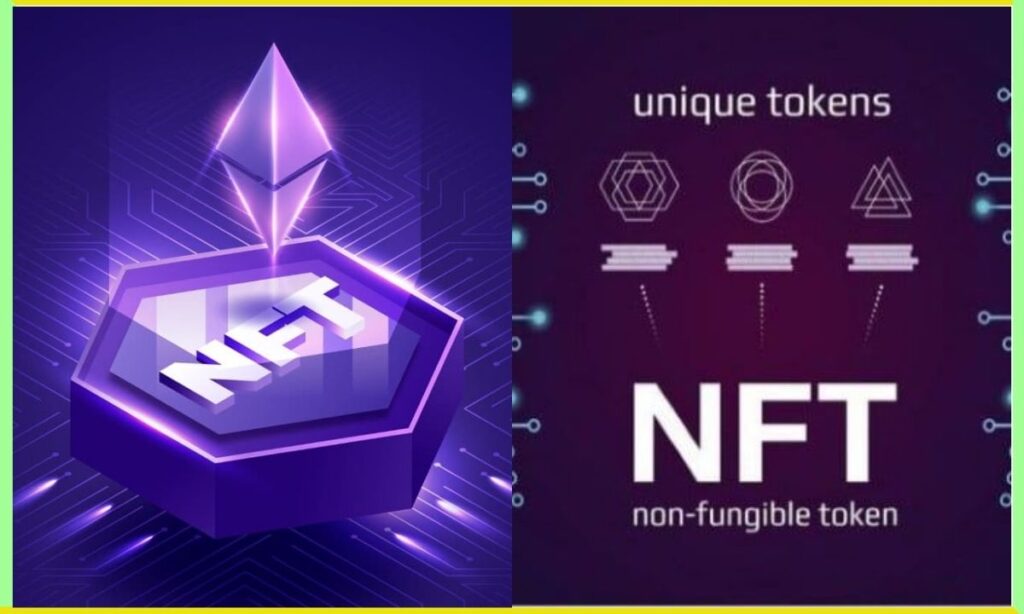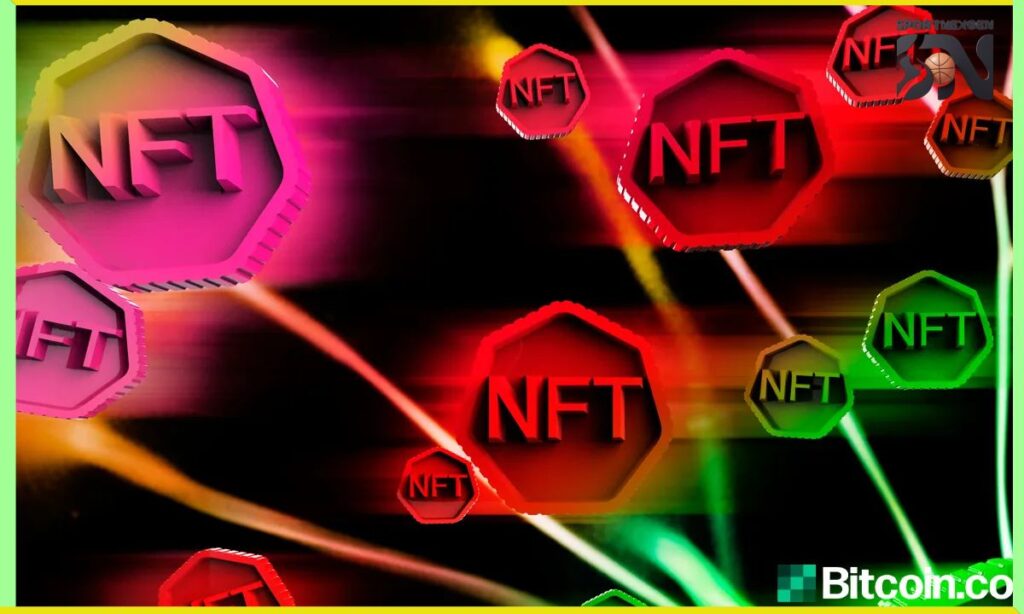NFTRandomize is a revolutionary NFT creation tool that has transformed the world of digital collectibles. This innovative technology uses advanced randomization algorithms to generate unique NFTs with randomized traits.
As the NFT market continues to grow, the demand for distinctive and rare digital assets has skyrocketed. NFTRandomize addresses this need by providing a powerful NFT collection generator that ensures each piece is one-of-a-kind.
The concept of NFT randomization has become increasingly important in the blockchain NFT tools ecosystem. It allows creators to produce large collections of unique NFTs efficiently, while also maintaining fairness and unpredictability in the distribution of traits.
How NFTRandomize Works
NFTRandomize employs a sophisticated randomization algorithm to assign traits to each NFT in a collection. This process begins with a set of predefined attributes, such as background colors, character features, accessories, and more. The tool then uses a complex mathematical formula to randomly combine these traits, ensuring that each NFT is unique.
The random trait assignment process is at the heart of NFT functionality. It works by selecting traits from various categories and combining them in ways that adhere to predefined rules set by the creator. This method allows for an enormous number of possible combinations, making it highly unlikely for two NFTs to be identical.
Key features of NFTRandomize
There are some key features of NFTRRandomize include:
Random Trait Assignment
One of the standout features of NFTRandomize is its ability to automatically assign different traits to each NFT. This ensures that every NFT generated within a collection is unique, as it combines various attributes such as colors, shapes, and accessories in unpredictable ways. By automating this process, creators can save time and effort while still achieving a high level of diversity in their NFT offerings.
Customization Options
NFTRandomize offers extensive customization options, allowing creators to set specific rules for how traits will be combined. This feature enables artists and developers to define parameters such as the number of traits per NFT and the likelihood of certain traits appearing. Such flexibility not only enhances creativity but also helps maintain balance within the collection, ensuring that no single trait becomes overly dominant.
Fair Distribution
Another key feature is the fair distribution of traits among NFTs. NFT employs algorithms that guarantee each trait has an equal chance of being assigned, preventing any bias in the creation process. This functionality is crucial for maintaining the integrity of a collection, as it ensures that all NFTs are perceived as equally valuable and collectible, thereby enhancing the overall appeal to buyers and collectors.
Benefits of Using NFTRandomize
The use of NFTRandomize offers numerous advantages for both creators and collectors in the NFT space. One of the primary benefits is the creation of truly unique NFTs. By utilizing random trait assignment, each piece in a collection becomes distinctive, increasing its potential value and appeal to collectors.
NFT also ensures a fair NFT distribution of traits across a collection. This fairness is crucial for maintaining the integrity of an NFT project and preventing accusations of favoritism or manipulation. It creates a level playing field for all collectors, as each NFT has an equal chance of possessing rare or desirable traits.
Read This Article:https://sportnexgen.info/exploring-the-slayunny2-phenomenon/
Applications of NFTRandomize

NFTRandomize has found applications across various sectors of the NFT industry. In the realm of digital art randomization, it allows artists to create expansive collections with minimal repetition. This tool has been instrumental in the success of projects like CryptoPunks, where thousands of unique characters were generated using randomization techniques.
The gaming industry has also embraced NFT for creating in-game items and characters. By using this tool, game developers can generate vast numbers of unique assets, enhancing the player experience and creating new opportunities for digital ownership within games.
Setting Up NFTRandomize
Setting up NFTRandomize involves a systematic approach to ensure successful NFT creation. First, creators need to define the traits and features they wish to include in their NFT collection, outlining the various attributes that will contribute to each NFT’s uniqueness. Once the traits are established, selecting an appropriate platform that supports NFT becomes crucial for efficient implementation.
Step-by-Step Guide on How to Implement NFTRandomize:
- Define your trait categories and options.
- Set rarity levels for each trait.
- Establish any necessary compatibility rules.
- Choose your preferred NFT creation tool that supports randomization.
- Input your traits and rules into the tool.
- Generate a test batch of NFTs.
- Review and adjust as necessary.
- Generate your full collection.
- Prepare metadata for each NFT.
- Upload your collection to your chosen blockchain platform.
Required Tools and Platforms:
To implement NFT effectively, creators need access to certain tools and platforms. These may include:
- NFT creation software with randomization capabilities.
- Image editing software for creating individual traits.
- A blockchain platform for minting and listing NFTs (e.g., Ethereum, Solana).
- Smart contract development tools.
- IPFS or other decentralized storage solutions for NFT metadata.
Troubleshooting Common Issues:
When using NFTRandomize, creators may encounter several common issues. These can include:
- Uneven trait distribution: Adjust rarity settings to ensure a balanced representation of traits.
- Incompatible trait combinations: Refine compatibility rules to prevent illogical or undesired combinations.
- Lack of uniqueness: Increase the number of traits or adjust randomization parameters for more variety.
- Technical glitches: Ensure all software is up-to-date and consult documentation or support forums for specific issues.
NFTRandomize vs. Other Randomization Methods
NFTRandomize stands out from other randomization methods by offering enhanced customization and control over trait distribution. Unlike predefined combinations that limit variability.
It allows creators to set specific rules, ensuring a wider range of unique outputs. This flexibility makes NFT particularly appealing for projects aiming to create distinctive and collectible NFTs.
Comparison with Other NFT Randomization Techniques:
NFTRandomize stands out from other randomization methods in several ways. Unlike simple random number generators, it offers more control over the distribution and combination of traits. It also provides more sophisticated options for setting rarity and ensuring uniqueness compared to basic shuffling algorithms.
Some projects use pre-generated combinations instead of true randomization. While this method can ensure absolute uniqueness, it lacks the flexibility and scalability of NFT. It strikes a balance between control and unpredictability, making it ideal for large-scale NFT projects.
Pros and Cons of NFTRandomize:
There Are some pros and cons of NFTRandomize
Pros:
- Generates truly unique NFTs
- Ensures fair distribution of traits
- Highly scalable for large collections
- Offers control over rarity and trait combinations
- Increases efficiency in NFT creation
Cons:
- May require technical expertise to implement
- Can be complex to fine-tune for optimal results
- Potential for unintended trait combinations
- Dependency on the quality of the initial trait pool
Security and Privacy Considerations

Security and privacy are paramount when utilizing NFTRandomize, particularly given the increasing scrutiny in the digital space. It employs secure algorithms designed to protect data during the randomization process, preventing unauthorized access.
Additionally, encryption is utilized to safeguard any sensitive information, ensuring that the integrity of the NFTs is maintained.
How NFTRandomize Ensures Data Security:
NFTRandomize prioritizes security in several ways. The randomization process itself is designed to be tamper-resistant, using cryptographic techniques to ensure the integrity of the trait assignment process. This prevents bad actors from manipulating the outcome to create unfairly rare or valuable NFTs.
The tool also implements measures to protect the trait data and randomization parameters from unauthorized access. This includes encryption of sensitive information and secure storage practices.
Addressing Potential Privacy Concerns:
While NFTRandomize primarily deals with trait data rather than personal information, privacy remains a consideration. The tool is designed to maintain the anonymity of both creators and collectors. It doesn’t store or process personal data as part of the randomization process.
However, it’s important to note that the resulting NFTs and their ownership are typically recorded on public blockchains. While this ensures transparency and verifiability, it also means that ownership information is publicly accessible. Creators and collectors should be aware of this aspect of blockchain technology when using NFT.
Read This Article Also:https://sportnexgen.info/gaming-news-etruesport/
Case Studies and Examples of NFTRandomize
Real-world examples illustrate the effectiveness of NFTRandomize in creating unique NFT collections. Projects like CryptoPunks have successfully employed randomization techniques similar to NFT to generate diverse digital characters, with each character exhibiting distinct traits. These successful implementations have set benchmarks for future NFT projects, showcasing the potential of randomization to enhance uniqueness.
Real-World Examples of NFTRandomize in Action:
- CryptoPunks: This pioneering NFT project used randomization to create 10,000 unique pixelated characters. Each punk was assigned a random combination of attributes, resulting in a highly diverse and collectible set of NFTs.
- Bored Ape Yacht Club: BAYC used a sophisticated randomization system to generate 10,000 unique ape avatars. The project’s success was largely due to the rarity and uniqueness of each ape’s traits.
- Axie Infinity: This blockchain-based game uses randomization to generate unique creature NFTs with various attributes affecting gameplay.
- Art Blocks: This platform uses generative algorithms, including randomization, to create unique pieces of digital art on-demand.
Success Stories and Lessons Learned:
There are some success stories and lessons learned define:
Success Stories:
- The Bored Ape Yacht Club collection saw immense success, with some rare apes selling for millions of dollars.
- CryptoPunks became one of the most valuable NFT collections, with total sales exceeding $1 billion.
- Axie Infinity’s use of randomized NFTs contributed to its popularity, with the game attracting millions of players worldwide.
Lessons Learned:
- Importance of trait balance: Projects learned that careful consideration of trait rarity and distribution is crucial for maintaining collection value.
- Community engagement: Successful projects used the uniqueness of randomized NFTs to build strong communities around trait rarity and collecting.
- Scalability challenges: Some projects faced issues with gas fees and network congestion when minting large numbers of randomized NFTs, leading to improved minting strategies.
- Transparency: Projects that were open about their randomization process gained more trust from their community.
Future Trends in NFT Randomization
The future of NFT randomization is poised for exciting developments as technology continues to evolve. Advanced algorithms are expected to enhance the efficiency of NFT, allowing for even more sophisticated trait generation. These improvements could lead to richer and more complex NFTs, capturing the interest of a wider audience.
Emerging Trends and Technologies:
- AI NFT Generation: The integration of artificial intelligence in NFT creation is an exciting frontier. AI algorithms could potentially create more complex and nuanced trait combinations, or even generate entirely new traits based on learned patterns.
- Dynamic NFT Traits: Future NFTs might feature traits that change over time or in response to certain conditions, adding a new layer of uniqueness and interactivity.
- Cross-platform Compatibility: As the NFT ecosystem expands, we may see randomization tools that create NFTs compatible across multiple blockchain platforms.
- Enhanced Rarity Systems: More sophisticated systems for determining and verifying the rarity of NFT traits are likely to emerge, possibly incorporating real-time market data.
How NFTRandomize Might Evolve?
The future of NFTRandomize is likely to include more advanced customization options, allowing creators even greater control over the randomization process. We might see the integration of machine learning algorithms to optimize trait combinations based on collector preferences and market trends.
Another potential evolution is the development of more interactive randomization processes, where collectors could participate in or influence the trait assignment in some way. This could create a more engaging minting experience and potentially increase the perceived value of the resulting NFTs.
Frequently Asked Questions
What is NFTRandomize?
NFTRandomize is a tool that uses algorithms to randomly assign traits to NFTs, creating unique digital assets for collections.
How does NFTRandomize ensure fairness?
It uses cryptographic techniques and transparent processes to randomly distribute traits, preventing manipulation and ensuring equal chances for rare combinations.
Can NFTRandomize be used for any type of NFT project?
Yes, NFT can be adapted for various NFT projects, including digital art, collectibles, gaming assets, and more.
Are NFTs created with NFTRandomize more valuable?
While uniqueness can increase value, an NFT’s worth depends on various factors including rarity, demand, and the project’s overall success.
How does NFTRandomize handle privacy and security?
NFTRandomize prioritizes data security through encryption and doesn’t process personal information, though NFT ownership is typically recorded on public blockchains.
Conclusion
NFTRandomize has revolutionized the creation and collection of NFTs, offering a powerful tool for generating unique digital assets. Its ability to create diverse, rare, and valuable NFTs has made it an essential part of many successful projects. As the technology continues to evolve, we can expect even more innovative applications and exciting developments in the world of NFT randomization.
The success stories and lessons learned from early adopters of NFTRandomize demonstrate its potential to create engaging and valuable NFT collections. However, successful implementation requires careful planning, community engagement, and a deep understanding of the NFT market.

Hayyat is a talented content writer and digital marketer with expertise in SEO, social media management, and online marketing. She excels at creating impactful, data-driven content to help businesses connect with their target audience and achieve measurable outcomes.





